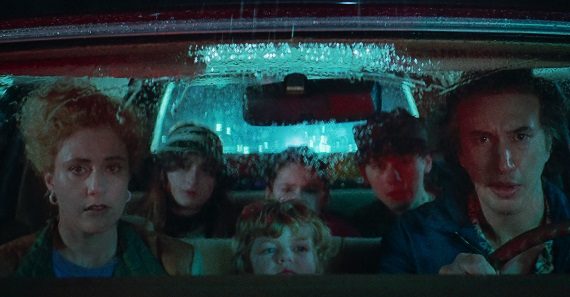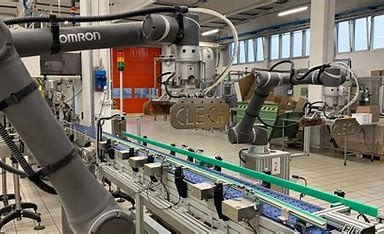Metaphor: An Object in Motion
Streaming now on Netflix is director Noah Baumbach’s adaptation of author Don DeLillo’s 1985 classic White Noise, a postmodern campus novel about the dangerous influence of the careless use of scientific inventions and technology which won the National Book Award the year it was published.
A still from Noah Baumbach’s adaptation of Don DeLillo’s novel White Noise. (Netflix)
Streaming now on Netflix is director Noah Baumbach’s adaptation of author Don DeLillo’s 1985 classic White Noise, a postmodern campus novel about the dangerous influence of the careless use of scientific inventions and technology which won the National Book Award the year it was published.
White Noise opens with a college lecture from Professor Murray Siskind (Don Cheadle), addressing both his students and the viewer: “Roll film,” he begins as the movie roars to life with a montage of car crashes drawn from the history of American filmmaking—the whole of cinematography is reduced to its essential conceit: an object in motion.
The etymology of cinema is from the ancient Greek κίνημα (kínēma) meaning “movement,” and a movie is a fiction using metaphor, which, incidentally, is also from the Greek for μεταφορά (metaforá) meaning “to transport.” Prof. Siskind isn’t simply interested in motion; he’s obsessed with collision yet careful not to frame the scenes in morbid or macabre terms. “Don’t think of a car crash in a movie as a violent act,” he urges his students. “No, these collisions are part of a long tradition of American optimism,” the professor argues. “Each crash is meant to be better than the last,” he explains. “There’s a constant upgrading of tools, skills, a meeting of challenges.”
At the heart of the film, a massive train accident leads to what is termed an “airborne toxic event” resulting in the evacuation of a neighboring town. Truth is still stranger than fiction and at times fiction collides with reality: On February 3rd, the actual neighboring town, East Palestine, Ohio—where White Noise was filmed and many of the locals were hired as extras—was evacuated after 20 train cars carrying hazardous materials derailed.
What the incident calls attention to in the real world is a society where the “constant upgrading of tools, skills, a meeting of challenges” Prof. Siskind celebrated are being exercised to create transportation that is designed to avoid or minimize the impact of a collision. This can be achieved through various technologies such as advanced driver assistance systems (ADAS), autonomous driving capabilities, and smarter vehicle design.
Some manufacturers are already incorporating these technologies into their vehicles, and different types of ADAS are already in operation in railways in many countries around the world, such as automatic train protection, collision avoidance, and automatic train operation systems. ADAS is used for condition monitoring track and rolling stock providing real-time information to train drivers and control centers. With the increasing dependence on ADAS technology, the importance of cybersecurity will become more critical. Future ADAS systems will need to be designed with robust security measures to prevent hacking and other malicious attacks.
ADAS is expected to play a crucial role in the development of autonomous vehicles, with the goal of eventually reaching full automation. The continued development of sensors and data processing algorithms will enable ADAS technologies to provide more accurate and reliable information about the vehicle’s environment with the potential of advancing the safety, performance, and efficiency of transportation.
White Noise presents a satirical view of the overreliance on technology and the illusion of safety that it can create. It highlights the ways in which people can become so dependent on technology that they lose touch with reality and become vulnerable to unexpected events. ADAS in railways can be seen as an example of how technology can be used to enhance safety and efficiency, but also as a potential source of complacency and a loss of agency for human operators. In this way, the use of ADAS in transportation could be interpreted as a contemporary manifestation of the same underlying themes that DeLillo critiqued in White Noise when he wrote:
“The car seemed to have no sense of being alive, no sense of its own reality. It was pure function. The tires contacted the road, the motor pressed us forward, the brakes stopped us, the steering mechanism directed us. All of it was robotic, inhuman. There was no sense of being part of a living thing, of participating in the flow of the universe. It was as if we had removed ourselves from the natural order of things, from the cycles of birth and death and regeneration, and entered into a world of pure technology, a world of perfect efficiency and control…. The road ahead of us seemed infinite, like a tunnel with no end. Anything could happen.”






